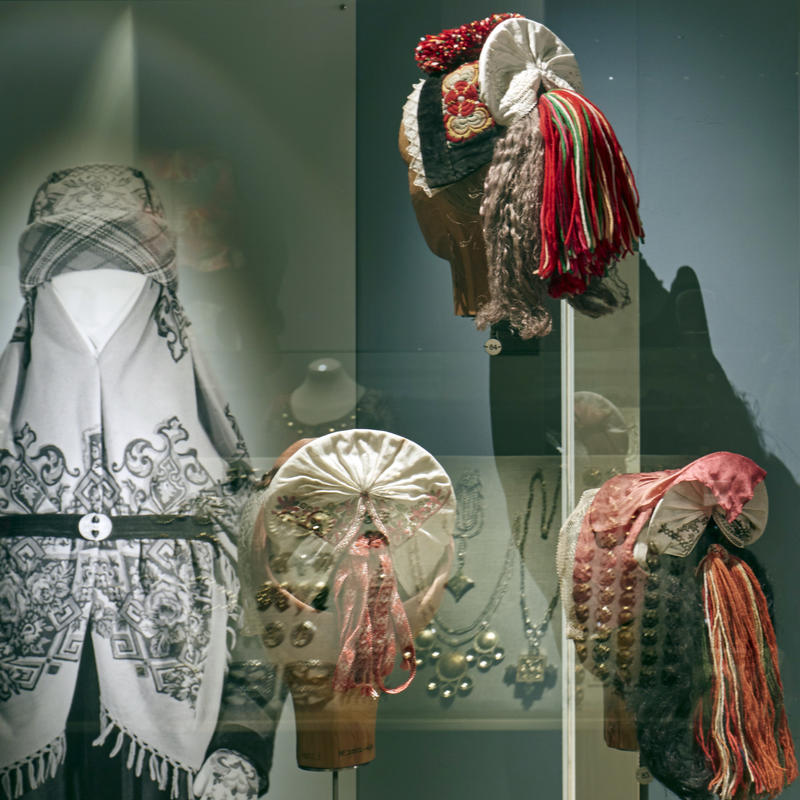- 1/1
The Folk Dress Exhibition Haakon Michael Harris / Norsk Folkemuseum
The independent farmer had an important position in pre-industrial society in Norway. This led to a strong focus on rural culture in the construction of a Norwegian identity toward the end of the 19th century.
Folk Dress
“Folk dress” describes clothing worn by rural people for everyday work, for churchgoing and for other special occasions.
clothes could be distinctive for the region or more generally influenced by urban and European fashion. Regional folk dress could also change over time, partly inspired by international fashion as well as a result of local innovation. Local variations in dress increased noticeably during the 19th century. In some areas, traditional folk dress was in use far into the second half of the 20th century.
Bunad
Bunads are clothes with historical elements used today only for festive occasions. In some areas, there was a seamless transition from traditional folk dress. In other areas bunads adopted elements from folk dress, such as embroidery, but changed the shape and cut of the garments. Some bunads have been designed in the course of the last century, often with little or no real historical connection. There are approximately 500 different types of bunads in production today. More than 60% of Norwegian women own a bunad.The type of silver worn with traditional folk dress is still used as a part of modern bunads. As a consequence, Norway has a strong living tradition of filigree silver jewelry.
Sami Dress
Traditional Samí clothing is neither characterized as folk dress nor as bunad. An unbroken tradition exists in Samí culture and, even though Samí dress is constantly changing, some medieval traits remain. Samí dress shows great regional variety, largely following dialect boundaries.Today, a vibrant creativity is expressed both in contemporary Samí fashion and jewelry design. Simultaneously, there is a dynamic use of traditional clothing. Many Samí also combine traditional elements with modern garments, to show identity and belonging.
